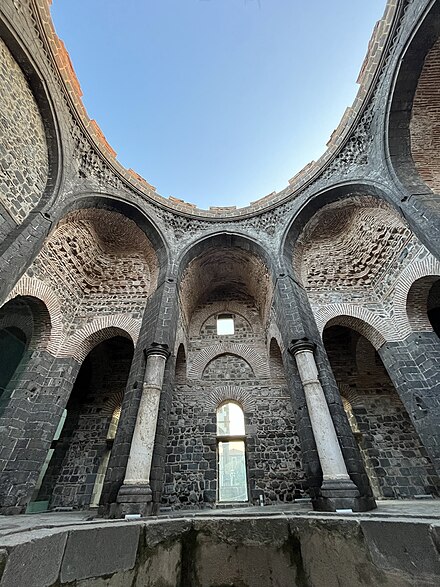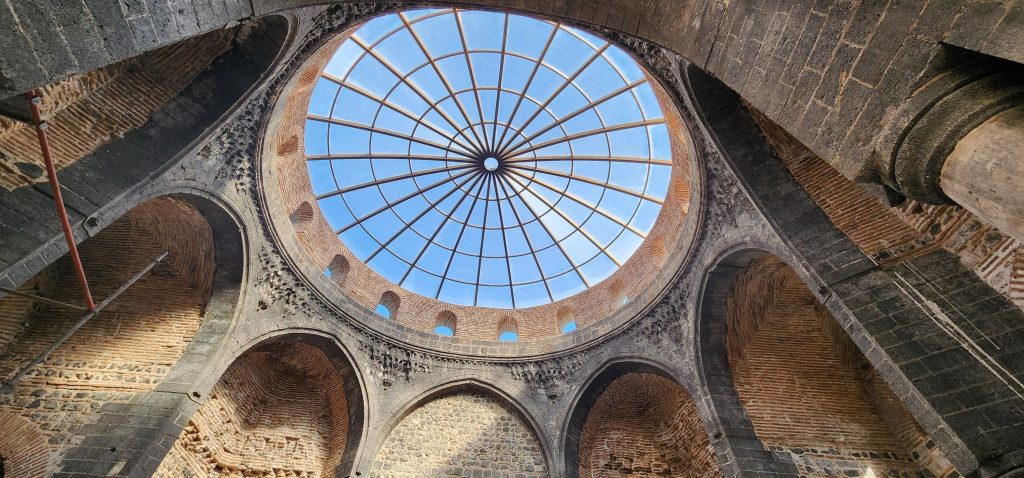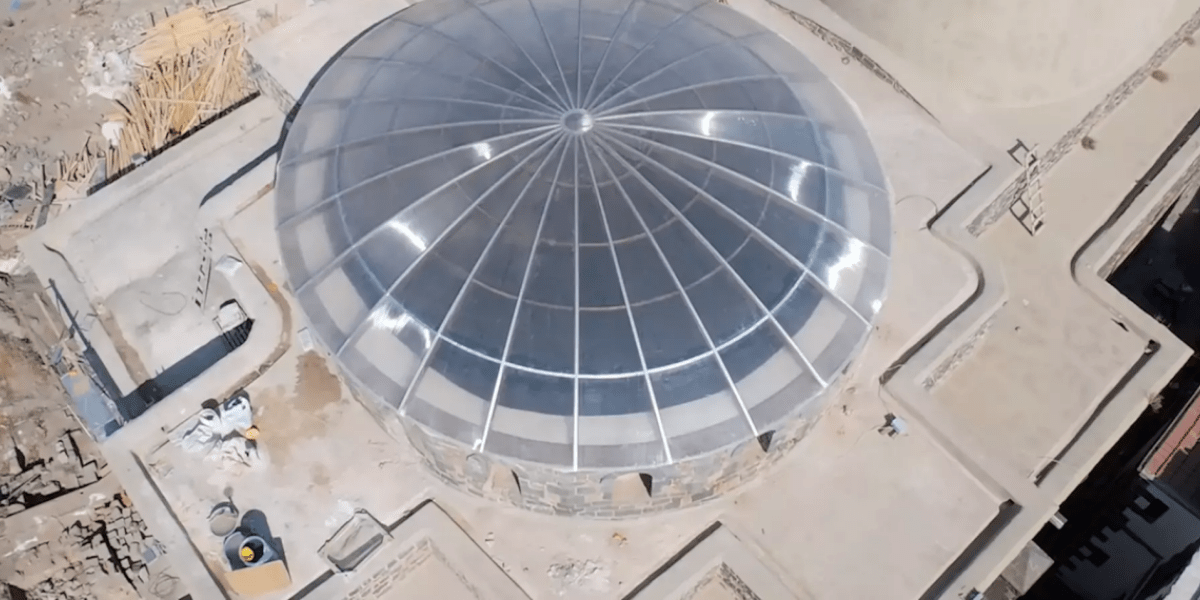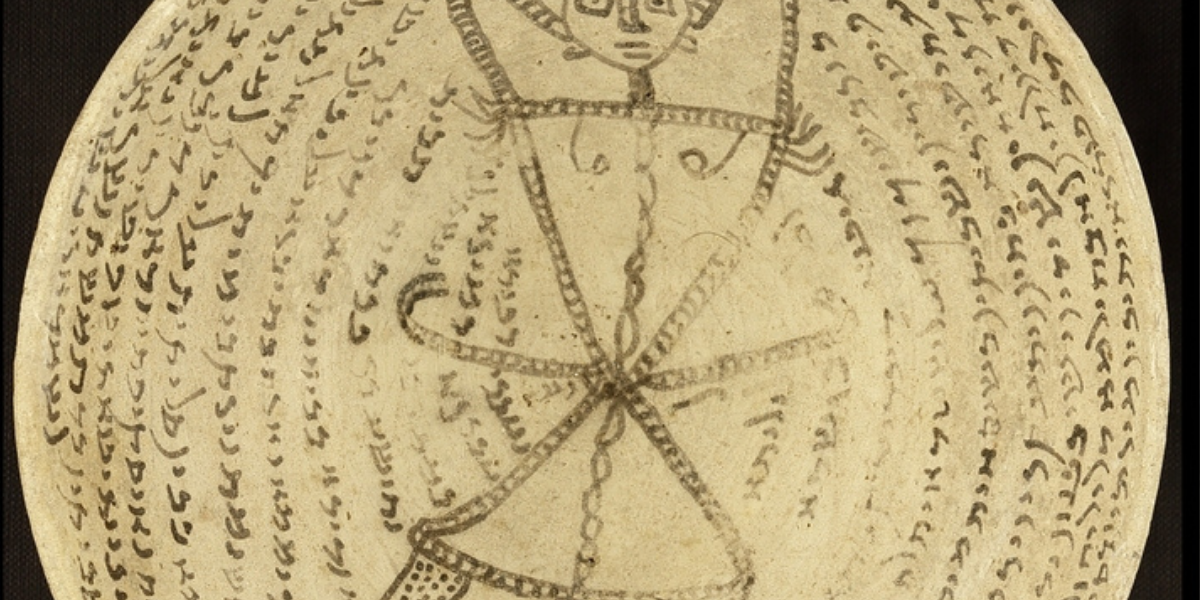The dome of the 1,600-year-old St. George Church in Diyarbakır, which was heavily damaged in the recent major earthquakes in Kahramanmaraş, has been replaced.
Originally built as a church of administration by the Romans 1,600 years ago, the St. George Church was restored in 2020. It is located in the northeastern corner of the historic İçkale settlement in the Sur district.
The Diyarbakır Municipality restored the church, which had previously been used as an art gallery, and reopened it for visitors in June 2021. However, the significant damage caused by the devastating earthquakes led the Ministry of Culture and Tourism to initiate a new restoration phase in July 2023.
The newly constructed dome replaces the original structure that was lost nearly 100 years ago and marks an important step in the restoration of the ancient building.
The Ministry of Culture and Tourism, in collaboration with the General Directorate of Cultural Heritage and Museums and the Diyarbakır Survey and Monuments Directorate, has worked to restore the church to its former glory.

Cemil Koç, the director of the Diyarbakır Survey and Monuments Department, stated: “We created a dome cover made of polycarbonate material on a wooden structure with a circumference of 40 meters (131.23 feet) and a diameter of 14 meters, we aimed to cover it with a new covering without breaking the visual connection with the sky, which has been ingrained in the minds of visitors.”
“We’ve created this transparent dome to protect the building from natural elements like rain and snow, while maintaining warmth inside,” Koç said. “The installation of the dome has accelerated the ongoing restoration work.”
Providing information about the restoration efforts, Cemil Koç said: “The Saint George Church is located at the northeastern corner of Içkale, it is a structure built on the outer castle walls, the church section was built in the third century during the Roman Period. The church is known as the ‘Black Priest Church,’ the part we are currently in was built as an addition to the western façade of the church during the Artuqid period, which is commonly known as a bath by the public but has been identified as a madrasa in research studies.”

“Historical record indicate that the church was covered by a dome until the early 20th century. After the dome was demolished, it was replaced by a wooden, octagonal tile cover, but the structure remained exposed after further damage in the 1930s.”
The restoration team detected significant deterioration due to weather exposure, which prompted the decision to construct a new dome.
Restoration works are planned to be completed by the end of the year. Once completed, the church will reopen as an art gallery, continuing its legacy as both a historical monument and cultural space.
Cover Photo: DHA




